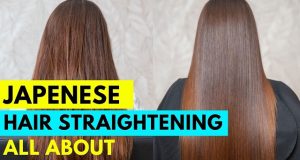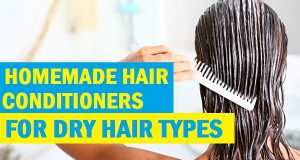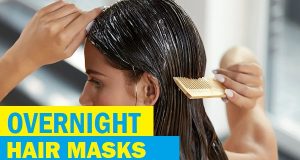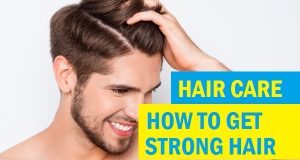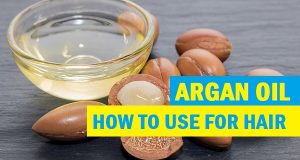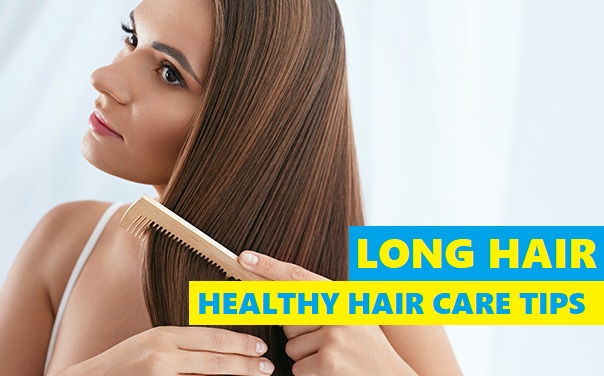
Having long and lustrous hair is a dream shared by many, and it’s no surprise why. Flowing, healthy locks are a symbol of beauty and vitality. However, achieving and maintaining long hair requires more than just wishful thinking. It requires a combination of proper hair care, a balanced diet, and a healthy scalp. In this article, we will provide expert tips and guidance to help you achieve long and gorgeous hair that turns heads wherever you go. Longer hair needs special hair care and some precautions to take.
Understanding Hair Growth of Long Hair
The Hair Growth Cycle
Before we dive into the tips for long hair, let us understand the hair growth cycle. Each hair strand goes through a unique growth cycle, consisting of three phases:
- Anagen Phase: This is the active growth phase, where the hair follicle produces new hair cells. The longer this phase lasts, the longer your hair can grow.
- Catagen Phase: After the anagen phase, the hair enters the transitional catagen phase. During this stage, the hair growth stops, and the hair detaches from the blood supply.
- Telogen Phase: The final stage is the telogen phase, also known as the resting phase. The hair remains in the follicle without growing and eventually sheds to make way for new growth.
Strategies for Extending the Anagen Phase
The key to achieving long hair lies in optimizing the anagen phase of the hair growth cycle. While the duration of this phase is primarily determined by genetics, certain practices can help extend it:
Nutrition: A balanced diet rich in essential nutrients, such as proteins, vitamins, and minerals, supports healthy hair growth.
Scalp Care: A clean and well-nourished scalp creates an ideal environment for hair follicles to thrive.
Hair Care Habits: Minimize heat styling and harsh treatments that can cause damage and breakage.
Nourishing Your Locks from Within: Role of Nutrition
Proper nutrition is the foundation of healthy hair growth. Here are some key nutrients that play a crucial role in promoting long and lustrous hair:
Proteins for Hair Strength
Hair is primarily composed of a protein called keratin. Ensuring an adequate intake of protein in your diet helps strengthen your hair and prevent breakage.
Vitamin C for Collagen Production
Vitamin C is essential for the production of collagen, a protein that supports hair structure and promotes elasticity.
Biotin for Hair Growth
Biotin, also known as vitamin B7, is a vital nutrient for hair growth. It helps strengthen hair strands and promotes healthy regrowth.
Omega-3 Fatty Acids for Scalp Health
Omega-3 fatty acids nourish the scalp and help prevent dryness and flakiness, supporting a healthy environment for hair growth.
Scalp Care for Long Hair
A healthy scalp provides the necessary foundation for long and luscious hair. Here are some tips for maintaining scalp health:
Regular Cleansing for Scalp Health
Regularly cleansing your scalp helps remove dirt, excess oil, and product buildup, creating a clean and healthy environment for hair follicles to thrive.
Scalp Massages for Hair Growth Stimulation
Scalp massages promote blood circulation to the hair follicles, encouraging hair growth and reducing hair fall.
Avoiding Excessive Heat Styling
Excessive use of heat styling tools can cause damage to the hair cuticles, leading to dry and brittle hair. Minimize heat styling and opt for heat protectants when necessary.
Haircare Dos and Don’ts: Keeping Your Hair Healthy
To maintain healthy hair while pursuing long hair, consider these dos and don’ts:
Using a Wide-Toothed Comb for Detangling
Use a wide-toothed comb to gently detangle your hair, starting from the ends and working your way up to minimize breakage.
Minimizing Hair Washing
Avoid washing your hair excessively, as it can strip your hair of natural oils, leading to dryness and potential damage.
Protecting Hair from UV Rays
Always shield your hair from the harmful UV rays of sun and the easiest way to do is by wearing a hat or using hair products with UV protection.
Styling Tips for Long Hair
Long hair offers numerous styling options to suit various occasions and moods. Embrace the versatility of your locks with these styling tips:
Braids and Updos for Special Occasions
Create intricate braids or elegant updos for special occasions or formal events to showcase the beauty of your long hair.
Achieving Beach Waves
For a relaxed and effortless look, try achieving beach waves using a curling wand or by braiding your hair overnight.
Half-Up Half-Down Styles for a Chic Look
For a chic and trendy look, experiment with half-up half-down hairstyles that strike the perfect balance between casual and sophisticated.
Long and lustrous hair can be yours with the right care and attention. By understanding the hair growth cycle, nourishing your hair from within, practicing scalp care, and following haircare dos and don’ts, you can achieve the hair of your dreams. Embrace the versatility of long hair and have fun experimenting with various styles. Remember, patience and consistent care are the keys to achieving and maintaining beautiful, long locks that make you feel confident and gorgeous.
FAQs
Q: How long does it take to achieve long hair?
A: The rate of hair growth varies among individuals, but on average, hair grows about half an inch per month. With proper care and healthy hair practices, you can achieve noticeable length within a few months.
Q: Can I use hair extensions to achieve long hair?
A: Hair extensions are a temporary solution to add length and volume to your hair. While they can help you achieve the appearance of long hair, they require regular maintenance and should be applied by a professional hairstylist.
Q: Is it necessary to trim my hair regularly for growth?
A: Regular trims can help prevent split ends and breakage, promoting healthier hair growth. However, you can minimize the frequency of trims by adopting healthy hair practices and using quality hair care products.
Q: Can I color my hair and still achieve long hair?
A: Yes, you can color your hair while pursuing long hair. However, it’s essential to use gentle hair dyes and follow a hair care routine that includes regular deep conditioning and hair masks to maintain the health of your colored locks.
Q: Are there specific hairstyles I should avoid to prevent damage?
A: Avoid hairstyles that tug or pull on your hair, such as tight ponytails or braids, as they can cause stress and damage to the hair shaft. Try to choose for looser styles that put less strain on your hair.
 Tips and Beauty Site about Skin care, Hair care, Health, weight loss and lifestyle tips
Tips and Beauty Site about Skin care, Hair care, Health, weight loss and lifestyle tips

